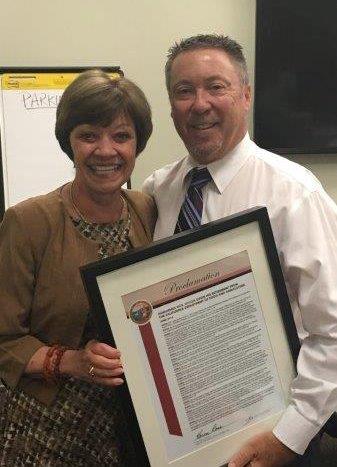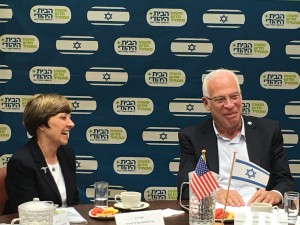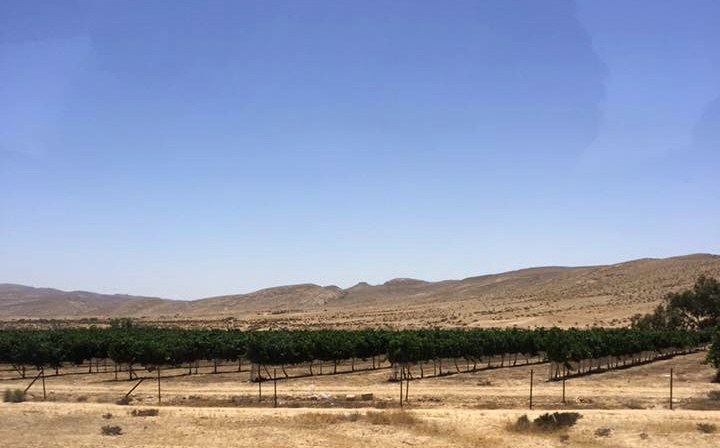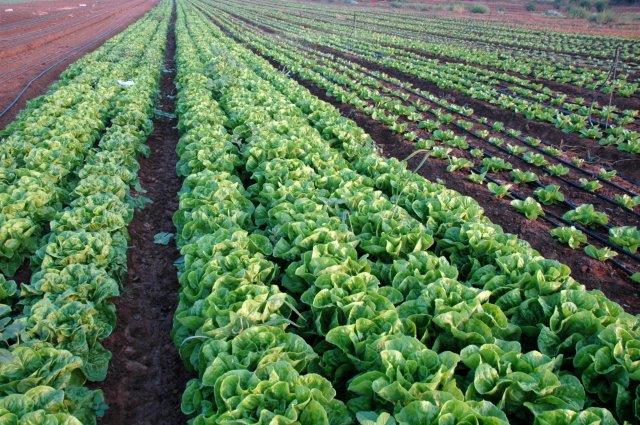-
Recent Posts
- $600 million for CDFA in new budget year
- A Pride Month Conversation with Cody Nicholson Stratton, of Foggy Bottoms Boys Farms
- Experience California Agriculture — Secretary Ross applauds new agritourism website from California Grown
- CDFA Celebrates Pride Month with Panel of LGBTQ+ Voices
- CDFA marches with Pride in Sacramento
Recent Comments
- Stacy Hackney on Despite Tariffs, California Continues Trade Engagement
- Keshav Boddula on Earth Week spotlight — CDFA Food Recovery webpage offers resources for reducing food waste
- Don’t Worry, US Investors Can Still Make Offshore Wind Happen … Somewhere – Bruce Beach CA News on California Peaches and Nectarines Arrive in Vietnam! New Export Market Opens for California Products
- US Investors Can Still Make Offshore Wind Happen…In Vietnam - Oilandinvest.com on California Peaches and Nectarines Arrive in Vietnam! New Export Market Opens for California Products
- US Investors Can Still Make Offshore Wind Happen…In Vietnam - nrinvesting.com on California Peaches and Nectarines Arrive in Vietnam! New Export Market Opens for California Products
Archives
- July 2025
- June 2025
- May 2025
- April 2025
- March 2025
- February 2025
- January 2025
- December 2024
- November 2024
- October 2024
- September 2024
- August 2024
- July 2024
- June 2024
- May 2024
- April 2024
- March 2024
- February 2024
- January 2024
- December 2023
- November 2023
- October 2023
- September 2023
- August 2023
- July 2023
- June 2023
- May 2023
- April 2023
- March 2023
- February 2023
- January 2023
- December 2022
- November 2022
- October 2022
- September 2022
- August 2022
- July 2022
- June 2022
- May 2022
- April 2022
- March 2022
- February 2022
- January 2022
- December 2021
- November 2021
- October 2021
- September 2021
- August 2021
- July 2021
- June 2021
- May 2021
- April 2021
- March 2021
- February 2021
- January 2021
- December 2020
- November 2020
- October 2020
- September 2020
- August 2020
- July 2020
- June 2020
- May 2020
- April 2020
- March 2020
- February 2020
- January 2020
- December 2019
- November 2019
- October 2019
- September 2019
- August 2019
- July 2019
- June 2019
- May 2019
- April 2019
- March 2019
- February 2019
- January 2019
- December 2018
- November 2018
- October 2018
- September 2018
- August 2018
- July 2018
- June 2018
- May 2018
- April 2018
- March 2018
- February 2018
- January 2018
- December 2017
- November 2017
- October 2017
- September 2017
- August 2017
- July 2017
- June 2017
- May 2017
- April 2017
- March 2017
- February 2017
- January 2017
- December 2016
- November 2016
- October 2016
- September 2016
- August 2016
- July 2016
- June 2016
- May 2016
- April 2016
- March 2016
- February 2016
- January 2016
- December 2015
- November 2015
- October 2015
- September 2015
- August 2015
- July 2015
- June 2015
- May 2015
- April 2015
- March 2015
- February 2015
- January 2015
- December 2014
- November 2014
- October 2014
- September 2014
- August 2014
- July 2014
- June 2014
- May 2014
- April 2014
- March 2014
- February 2014
- January 2014
- December 2013
- November 2013
- October 2013
- September 2013
- August 2013
- July 2013
- June 2013
- May 2013
- April 2013
- March 2013
- February 2013
- January 2013
- December 2012
- November 2012
- October 2012
- September 2012
- August 2012
- July 2012
- June 2012
- May 2012
- April 2012
- March 2012
- February 2012
- January 2012
- December 2011
- November 2011
- October 2011
- September 2011
- August 2011
- July 2011
- June 2011
Categories
- AG Vision
- Agricultural Education
- Agricultural Marketing
- Alternative Fuels
- Animal health
- Animal Welfare
- Asian Citrus Psyllid
- Biodiversity
- Border stations
- BSE
- Cannabis
- Cannella Panel
- Climate Change
- Climate Smart Agriculture
- Community-based Food System
- Conservation
- Dairy
- Drought
- Environment
- Fairs
- Farm Bill
- Farm Labor
- Farmers' Markets
- Fertilizer
- Food Access
- Food Safety
- Food Waste
- Glassy-winged Sharpshooter
- Growing California
- Healthy soils
- HLB
- Hydrogen
- Integrated Pest Management (IPM)
- Invasive Species
- Light Brown Apple Moth
- Livestock ID
- Measurement Standards
- Nutrition
- Organic agriculture
- Pierce's Disease
- Pollinators
- Specialty Crops
- State Board of Food and Agriculture
- Succession Planning
- Trade
- Uncategorized
Pages
RSS

Secretary Ross thanks CDFA’s Rick Jensen for more than 40 years of service
Posted in Uncategorized
1 Comment
Apps for Ag Hackathon scheduled for July 15-17 at UC Davis
Apps for Ag is a series of agriculture focused hackathons. Our purpose is to bring together the seemingly disparate worlds of software development and commercial farming into a collaborative event.
Our mission is to develop useful technology to address the needs of today’s grower, and to seed new enterprises in the AgTech and FoodTech sectors which will create new jobs.
The series will travel throughout the agricultural production areas of California and beyond. We welcome developers with diverse backgrounds, levels of experience and specialties to our events.
Our next event (July 15-17 at UC Davis) is going to be hosted by University of California Agriculture and Natural Resources (UC ANR), with the final round of judging to take place at the California State Fair.
Hackathons are a time tested Silicon Valley tradition. The purpose is not at all to “hack” into computer systems for malicious purposes. Rather, the term is based on the positive connotation of the word “hack”: to write clever software programs that solve an old problem in a new and optimal way.
Hackathons are typically 24-48 hours long and are an endurance challenge of ideation, iteration, collaboration and focus. Participants will put in long hours, some don’t even sleep, as they rush to develop as much of the concept as possible before judging. The event culminates in a judged contest, or “Pitchfest”.
The makeup of the judging panel reflects all of the respective industry stakeholders. It will include experienced growers, software engineers, entrepreneurs and investors. Judges are asked to rate each team on 1.) the impact of the concept, 2.) a compelling story of collaboration and 3.) the technical merit of the concept. Participating growers benefit by giving voice to their needs during the “Industry Panel” that kicks off each event.
The growers and industry representatives who participate may very well realize a purpose-built software application to address their stated challenge. They also get to observe what software development looks like, to see how challenging it can be, to learn a new vocabulary, to try something different and to discover many commonalities with another industry. Developers benefit by showing off their skills, networking within their industry, obtaining domain expertise in a new industry, learning about the technology that already exists in agriculture and, ideally, making a productive impact on the nation’s food chain.
Posted in Uncategorized
Leave a comment
Climate Smart Israel – a visit to the ‘Financial Innovations Lab’
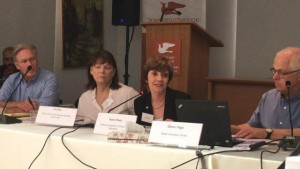
Secretary Ross at the Financial Innovations Lab at the Milken Innovation Center in Israel. State Board of Food and Agriculture president Craig McNamara is at the far left.
Secretary Ross traveled through Israel this week with a California delegation interested in adaptation strategies for climate change and drought
Yesterday, as our travels through Israel neared their conclusion, our delegation participated in the Financial Innovations Lab of the California-Israel Global Innovation Partnership, sponsored by the Jerusalem Institute for Israel Studies Milken Innovation Center. The topic of the day was accelerating the growth of agricultural technology in Israel and California, a focus resulting from the 2014 M.O.U signed by Governor Brown and Prime Minister Netanyahu.
Given our week of travels learning about Israel’s water solutions, the subjects of technology, increased efficiency, and recycled water utilization were all top of mind for us Californians! But the discussion was much broader – identifying the conditions, barriers and opportunities facing agricultural producers, and the range of technologies that could be deployed to ensure global food security in the face of climate change. Meeting future global demand will require investments in a combination of yield improvements, resource optimization and loss reduction.
A discussion about the barriers to Ag tech financing really focused on the issue that Ag tech doesn’t generate the rate of return compared to other elements of the tech industry, and the discussion touched on the need for patience due to the seasonality of production agriculture.
In addition to talking about the need for investment to stimulate accelerated and wide-spread adoption of Ag technologies, there was a spirited discussion about infrastructure: the importance of objective third-party-generated data and demonstration projects; the value of publicly funded research; new opportunities for public-private-philanthropic partnerships; the critical role of getting government policies right; and the proven success of offering incentives to accelerate the adoption-curve of new technologies.
Over and over again, we stressed how important it is to clearly understand problems from the growers’ point of view and develop technology solutions in concert with growers to shorten the cycle for commercialization. Too often in recent years, technologies have been presented that are disconnected from the realities in the field and time is lost to screening the sheer number of new technologies being offered. This is where the value of incubators and the example of the Western Growers Innovation Center were offered as solutions.
It was a stimulating discussion, and I look forward to a report on the session and draft recommendations. Following all that, our final afternoon in Israel ended with a tour of Old City Jerusalem before our 9 p.m departure for Ben Gurion Airport.

Secretary Ross with members of the delegation for the California Climate-Smart Agriculture Policy Mission
Posted in Uncategorized
Leave a comment
California State Fair honors “Best of Show” in wine, beer, cheese and olive oil
For more than 160 years, the California State Fair has showcased the best of the Golden State. This year’s competition welcomed an impressive range of wine, cheese, beer and olive oil entries, and the “Best of Show” honors were awarded at a ceremony earlier today on the west steps of the State Capitol. The complete list of winners can be found at castatefair.org.
The 2016 California State Fair will take place July 8-24. Tickets available at CAStateFair.org/Tickets.
Posted in Agricultural Education
Tagged beer, Cheese, craft beer, olive oil, State Fair, wine
1 Comment
Climate Smart Israel – to Jerusalem and the Sea of Galilee
Secretary Ross is traveling through Israel this week with a California delegation interested in adaptation strategies for climate change and drought
Yesterday took us north to the Sea of Galilee. The sense of history here leaves me in a state of awe. The Sea of Galilee is also known as the Kineret. It is Israel’s largest fresh water reservoir and the country’s largest and most important source of drinking water.
We met with top officials of the plant breeding company Kaiima Ltd in Moshav Sharon which was listed in 2014 by MIT in its top-50 smartest companies. It is a very small company among giants like Amazon, Google and Tesla. It’s two founders have backgrounds in plant breeding and genetics, and they developed a non-GMO genetics platform to improve yields and characteristics for resiliency. The World Bank is an investor. It’s main focus is on the major crops in the world: wheat, soybeans, rice, corn, canola, tomatoes and peppers. Top Seeds is its subsidiary that specializes in vegetable seeds. The company’s plant breeding process can shave 2-3 years off the plant breeding cycle which can take up to ten years. In addition to improved productivity Top Seed is innovating to deliver better taste and longer shelf life. A member of our delegation, Hank Giclas of Western Growers Association, takes us on a quick tour.
We then traveled to Jerusalem – a sprawling, hilly city mixing the very modern with some of the oldest history we know. State Board chairman Craig McNamara, Josh Eddy, the board’s executive director, and I left our delegation for a meeting at the Knesset with the Minister for Agriculture and Rural Development, Uri Ariel.
Minister Ariel and I agreed to establish a work group to develop a couple if areas for joint projects and collaboration. In addition to water and climate smart agriculture, he is interested in advancing aquaculture, the use of satellites and drones to improve agriculture, and agri-tourism.
We joined our delegation at a dinner hosted by the Milken Institute in preparation for today’s Innovation Lab visit. Delegation members were energized by their earlier discussion with the dynamic manager of Hagihon, the water delivery and wastewater entity for Jerusalem.
Posted in Uncategorized
Leave a comment
Climate Smart Israel – the Negev Desert
Secretary Ross is traveling through Israel this week with a California delegation interested in adaptation strategies for climate change and drought
Yesterday we visited the Ben Gurion University Desert Research Institute. Ben Gurion was Israel’s first prime minister. He believed in the potential of the Negev Desert and said, “If the state does not liquidate the desert, the desert may liquidate the state.” (He is buried here overlooking a vast desert valley.) The Desert Research Institute was established specifically to address dry land issues and how to make the desert suitable for humans to live in. The Negev represents 60 percent of Israel’s land mass and contains 8 percent of its population.
Dry land covers one-third of all the land on earth. Within the Desert Research Institute are three divisions to address water issues; dryland agriculture and biotechnology; and, environmental studies and solar science (this includes social sciences and architecture). Climate change studies are a part of all these.
According to the United Nations, by 2050 forty-five percent of the world’s population will live in countries chronically short of water. Historically, we have thought of the lack of water as a problem of the poor in developing countries, but not any more.
Plant science and microbiology are the heart of the Ag program. Researchers are focused on root studies. As one said, “Understanding roots will lead us into the second green revolution!”
We ended the day with a stop at a newly opened small case production winery in Moshav Givat Yeshayahu. Here we met with the coordinator of water and stream rehabilitation for the Society for the Protection of Nature in Israel. It was a lively discussion about how to work with farmers and policy maker to restore stream flows and river restoration. Throughout its history the emphasis has been to build for a new nation and the organization is concerned that the impacts to nature must be mitigated before it is too late.
Posted in Uncategorized
Leave a comment
Climate Smart Agriculture – California and the Netherlands to co-host joint webinar on July 7
The California Department of Food and Agriculture and the Ministry of Economic Affairs in the Netherlands will co-host a joint webinar on Climate Smart Agriculture on July 7, 2016. The webinar will feature discussions and presentations addressing salinity in specialty crops within California’s Central Valley and along coastal areas.
“Climate Change is furthering collaboration around the globe among farmers and researchers to address strategies for improving agricultural production and sustainability,” said CDFA Secretary Karen Ross. “The Netherlands is a good example for practices and approaches on climate smart agriculture that can be beneficial to California.”
The webinar will be held on July 7th from 9 a.m. to 11 a.m. in California and individuals can register for free at – https://www.cdfa.ca.gov/climatesmartag/ The webinar can also be viewed live at the California Department of Food and Agriculture, 1220 N Street – Main Auditorium, on the day on the event.
Saline agriculture, the ability to produce crops with brackish water and in high salinity soils, could potentially be of interest to California farmers who encounter these growing conditions. This webinar will feature an overview by Arjen de Vos of Salt Farm Texel, a producer of saline agriculture in the Netherlands, as well as perspective from California State Board of Food and Agriculture member Don Cameron, of Terranova Ranch, a diversified farming operation in the Central Valley. Researchers from Wageningen UR and University of California will also provide perspective.
The Climate Smart Agriculture webinar is the first in a series of online discussions on Climate Smart Agriculture to be hosted in the coming months in collaboration with the University of California’s World Food Center.
Posted in Uncategorized
1 Comment
Climate Smart Israel – a delegation update from Secretary Ross
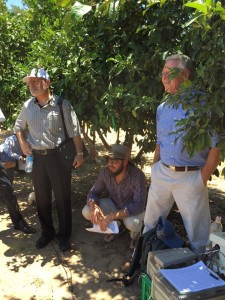
California State Board of Food and Agriculture president Craig McNamara (far right) in New Yavne, Hamerkaz, Israel.
Secretary Ross is traveling through Israel this week with a California delegation interested in adaptation strategies for climate change and drought
Yesterday we started with an excellent overview of agriculture in Israel presented by Oren Shaked, a senior agricultural specialist with the U.S. Embassy. Oren described water in ag like a bike ride, “you can never stop pedaling!” They continually look at how they can do more with every drop they get. He noted the Field Advisory Service of Israel plays a vital role in the adoption of ag technology.
The list of challenges facing farmers here was almost identical to a list for California with the exception of BDS (boycott divestment sanctions). We heard about real world effects of BDS later in the day from a young farmer who has suffered loss of markets in the EU.
Our meeting with Mekorot, Israel’s National Water Company, was fascinating and could have easily lasted a half day! The Israel Water Commission makes the decisions on all water allocations and pricing. Waste water is a resource and water for ag is priced by type of treatment. Mekorot is the engineering and knowledge mechanism for its delivery. Mekorot’s 30 years of experience in seawater and brackish water treatment has improved energy efficiency, reduced consumption of chemical products, and minimized water loss (to leakage and evaporation). Mekorot prides itself on being a world leader in water technology that has turned an arid desert into a “flowering garden,’ and seawater into drinking water.
The Volcani Institute, the research arm of the Ministry of Agriculture, has 200 scientists, 800 support staff and 300 students working on a broad agenda with a focus on arid-zone agriculture in a changing climate. We heard about their special wheat breeding program to develop varieties to cope with climate change; efforts to combat the impact of rainfall on soil erosion and run-off; lysimeters used to study plant nitrate uptake and deep percolation for different water qualities and crops; the use of plant sensors to measure water flow in citrus trees as well as stem growth and contraction; thermal imaging and drones to detect real time irrigation needs; automatic traps to monitor pests and real time changes in their behavior; and, new technology that enables simultaneous temperature and humidity control in greenhouses for optimal yield production.
Our last stop of the day was at Hishtil Ashkelon, a family business started in 1974 to provide premium plants to produce growers in hot climates. The company is GLOBALG.A.P.– certified and adheres to strict protocols for uniform, reliable plants. Its grafted plants are suited for mechanical planting.
The evening ended with sunset on the Mediterranean and a fun dinner in old-town Jaffa. I am traveling in great company!
The California Climate-Smart Agriculture Policy Mission is funded in part by the California Department of Food and Agriculture’s Specialty Crop Block Grant Program
Posted in Uncategorized
Leave a comment
Climate Smart Israel – a report from Secretary Ross
Greetings from Tel Aviv! This was the first modern city built in Israel. The city itself has a population of about 200,000 but the entire metropolitan area is home to 3.5 million of the country’s 8.2 million inhabitants.
On our first day of Climate Smart visits we traveled south to the Negev region and its capital, Beersheba. Netafim hosted us for a great discussion about how we all work together to achieve increased agricultural productivity and better quality while saving water. Netafim, a pioneer in drip irrigation and water use efficiency solutions, was established in 1965 by farmers in the Negev desert by the Kibbutz Hatzerim. According to CEO Ran Maidan they “need the farmers to smile” because Netafim has helped them accomplish yields, quality and a high return on investment!
Innovation and technology have helped Israel move from water scarcity to water security. They believe this is due in large part to the focus on agriculture – from the expansive use of recycled water (lots of purple pipe throughout the countryside) for irrigation and utilization of drip for all crops. I really liked Netafim’s stated values that drive its employees in their sense of mission: Dare; Make it Happen; Create an Impact; and, Partner for Success!
We were hosted for lunch in the kibbutz dining room before we made a quick stop at a Jojoba planting that is 14 years old, with an original subsurface drip irrigation system that has performed with very few problems and no replacements. Jojoba berries are pressed for oil used in cosmetics and as a botanical for lots of personal care products. The kibbutz processes its own Jojoba oil. California State Board of Food and Agriculture member Don Cameron is a member of our delegation and had an opportunity to visit the planting along with representatives of Netafim.
We also visited Rootility in Ashkelon, which took us to within eight miles of Gaza. Rootility is a startup plant breeding company using a high through-put accelerated conditions simulation system focused on roots to improve extreme temperature, drought and salinity resilience. The company – like Netafim – has a California presence. This year it is conducting trials on 850 acres of processing tomatoes. In addition to tomatoes, it has done proof-of-concept trials on peppers, melons, sugar beets, corn, rye grass and sunflowers.
Additionally, we visited the Volcani Center, a research arm of the Israel Ministry of Agriculture. CDFA Science Adviser Amrith Gunasekara is also part of our delegation and shows us some of the highlights.
We have also attended a networking reception and dinner in the Herzilya Pituah district of Tel Aviv with leaders of a number of Israel agriculture technology companies who are doing business in California. It was one of the most successful networking events I’ve ever seen – the conversations were non-stop all around the table and we left feeling like we have lots of potential partners for collaboration to meet our water and climate challenges.
The California Climate-Smart Agriculture Policy Mission is funded in part by the California Department of Food and Agriculture’s Specialty Crop Block Grant Program
Posted in Uncategorized
Leave a comment
Climate Smart Israel – California delegation set to learn about conservation strategies in a semi-arid land
Israel is regarded as perhaps the most climate-smart agricultural region in the world. It has to be, with annual rainfall of about 17 inches (source: World Bank). By comparison, portions of the Sierra Nevada, the source of much of California’s water, can receive more than four times that amount.
However, the drought and the prospect of climate change has us challenging our long-held assumptions. That’s why I am pleased to be leading a delegation to Israel (June 17-25) to learn more about the country’s climate smart strategies, especially irrigation technologies and extensive use of recycled water.
Our travels will include a tour of a water management facility in Jerusalem, a visit to a nursery just north of Gaza, and a trip to Netafim, an Israeli Ag technology company in the Negev Desert that also does business in California.
The delegation furthers a relationship between California in Israel that was cemented in 2014, when Governor Brown and Prime Minister Benjamin Netanyahu signed a memorandum of understanding to develop joint projects and conduct mutually beneficial research.
Israel innovates with technology, efficient irrigation, recycled water, and plant breeding for drought conditions and salinity. And it all works – the country is able to produce the most of the food it requires to feed its citizens, yet its per-capita water use is only one-third of California’s. Eighty-five percent of the country’s wastewater is recycled for agricultural use, compared to just 9.5 percent in California.
We’ll be providing updates during our trip. I hope you’ll follow along. I see this as just the beginning of a more extensive and fruitful Climate Smart Ag relationship between Israel and California.
The California Climate Smart Delegation to Israel
-Jason Sharett, California Strawberry Commission
-Robert “Bob” Curtis, Almond Board of California
-Don Cameron, Terranova Ranch, Helm, CA; member, California State Board of Food and Agriculture
-Craig McNamara, Sierra Orchards, Winters, CA; president, California State Board of Food and Agriculture
-Sean McNamara, Sierra Orchards, Winters, CA
-Hank Giclas, Sr. , Western Growers Association
-Timothy A. Jacobsen, Center for Irrigation Technology, CSU Fresno
-Khaled M. Bali, Ph.D, Irrigation/Water Management Advisor, University of California – Cooperative Extension
-Steven Moore, Board Member, State Water Resources Control Board
-Kamyar Guivetchi, P.E, Manager, Statewide Water Planning, California Department of Water Resources
-Brooks D. Ohlson, Director, Sacramento Center for International Trade Development
-Alvar Escriva Bou, Public Policy Institute of California
-Dillon L. Hosier, National Director, Israeli-American Council
-Carlos Suarez, State Conservationist for California, USDA Natural Resources Conservation Service
-Abby Browning, Governor’s Office of Emergency Services
– Karen Ross, Secretary, CDFA
-Amrith Gunasekara, Ph.D, Science Advisor to Secretary Ross, CDFA
-Josh Eddy, Executive Director of California State Board of Food and Agriculture
The California Climate-Smart Agriculture Policy Mission is funded in part by the California Department of Food and Agriculture’s Specialty Crop Block Grant Program.
Posted in Uncategorized
Leave a comment


